10 historical places in Lithuania worth visiting

Lithuania is a country with a rich history, and tourists can find a plethora of historical sites worth visiting. Amazing castles, majestic cathedrals, and the secrets of Lithuania’s historical sites are explored in this article. We will examine 10 historical places in Lithuania that are worth visiting, along with interesting facts about each location.
Trakai Island Castle
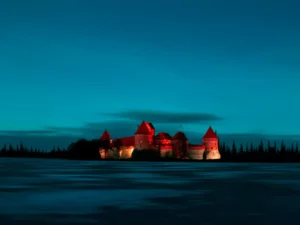
Trakai Island Castle is a stunning medieval fortress located on an island in Lake Galvė. Built in the 14th century by the Grand Duke of Lithuania, it served as a strategic fortress in the country’s battles against invading armies. Today, visitors can explore the castle’s interior, including numerous towers and chambers, and learn about its fascinating history.
Vilnius Old Town
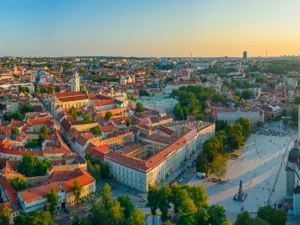
Vilnius Old Town is listed as a UNESCO World Heritage Site and is one of the largest remaining medieval old towns in Europe. Visitors can explore its narrow streets, historical churches and buildings, as well as charming cafes and restaurants. The city is also famous for the Gothic St. Anne’s Church, which Napoleon once wanted to relocate to Paris, brick by brick.
Kaunas Castle
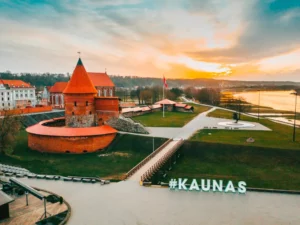
Kaunas Castle is a partially restored castle complex located in the city of Kaunas. It was built in the 14th century and played an important role in Lithuania’s history. Visitors can explore its towers and walls, as well as its museum displaying artifacts from the castle’s history. Interestingly, during the castle’s restoration, workers discovered an old underground prison with the remains of prisoners still present.
Panemune Castle

Panemunė Castle is a grand 17th-century castle located in Raudonė town. Originally built as a fortress, it was later converted into a noble family’s residence. Today, visitors can book tours of the castle’s halls and rooms, including the grand ballroom and chapel.
Palanga Palace
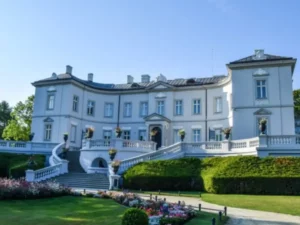
Nestled amidst the picturesque coastal town of Palanga in Lithuania, Palanga Castle stands as a magnificent testament to the region’s rich history and architectural heritage. Originally constructed in the 19th century by Count Feliksas Tiškevičius, this neo-Gothic masterpiece served as his family’s luxurious summer residence. Today, Palanga Castle has been transformed into a captivating cultural hub, housing an array of museums, art galleries, and exhibitions that showcase the area’s cultural, artistic, and historical treasures. Set against the backdrop of lush gardens and serene ponds, the castle exudes an aura of elegance and grandeur, inviting visitors to step back in time and immerse themselves in the opulent lifestyle of Lithuania’s aristocracy. With its captivating blend of history, art, and natural beauty, Palanga Castle remains a must-visit destination for travelers seeking to uncover the enchanting charm of Lithuania’s coastal region.
Hill of Crosses

The Hill of Crosses is a spiritual place in northern Lithuania, famous for its thousands of crosses. Visitors come from all over the world to leave crosses and spend time with their thoughts or prayers. The origin of the hill and the crosses is unknown, but it is believed that the tradition began in the 19th century. This place has become a symbol of Lithuanian national identity and resistance against foreign occupation.
Pazaislis Monastery
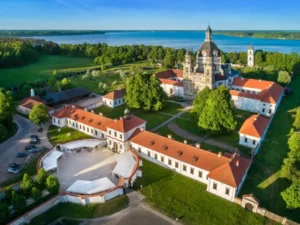
Pazaislis Monastery is a beautiful baroque monastery located in Kaunas City. It was built in the 17th century and served as a convent. Today, visitors can take tours of the monastery’s ornate interior rooms and enjoy the peaceful surroundings.
Vilnius Cathedral

Vilnius Cathedral is a majestic neoclassical cathedral located in Vilnius Old Town. The cathedral was initially constructed in the 14th century but has been destroyed and rebuilt several times over the centuries. Today, visitors can explore the cathedral’s stunning interior, including its ornate chapels and beautiful stained-glass windows, and also visit its crypts.
Zemaite Hill
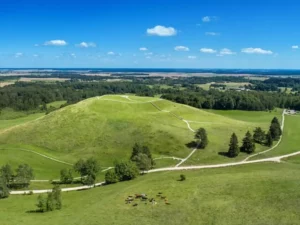
Zemaite Hill is an important historical site in western Lithuania. A castle once stood here, and the hill played a significant role in Lithuania’s battles against the Teutonic Knights. Today, visitors can explore the hill’s ruins and learn about its fascinating history.
When visiting these historical sites, it is essential to remember that they are not just tourist attractions but also important
cultural and historical symbols. Be sure to act respectfully and responsibly to ensure that they are protected and preserved for future generations.
From magnificent castles to spiritual pilgrimage sites, Lithuania’s historical places offer something for everyone.
Additionally, many of these sites offer guided tours and informative exhibitions, providing a deeper understanding of Lithuania’s rich history. Visitors can also enjoy local food and drinks and purchase unique souvenirs at nearby restaurants and shops.
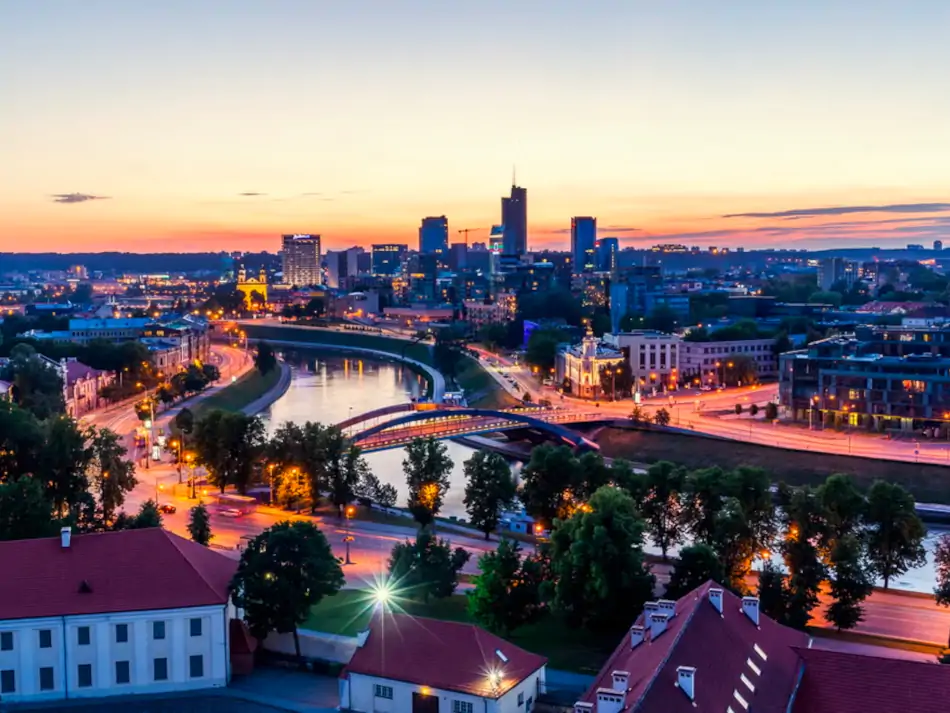
In conclusion, Lithuania is a treasure trove of historical sites and monuments worth visiting. From magnificent castles to spiritual pilgrimage sites, Lithuania’s historical places offer something for everyone. Therefore, if you are a history lover or simply looking for an enriching cultural experience, be sure to add these 10 historical places to your travel itinerary.